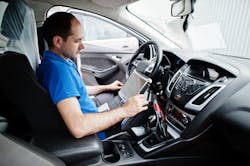How the elite compete
As national multi-store operators (MSOs) continue to grow in most markets, it will be the elite independent repairers that survive in the consolidator environment. By elite, I mean those shops that have taken the steps to become an OEM-certified repair facility. With national MSO consolidation reaching the 50-percent market penetration mark, I feel that being OEM-certified will give collision repair centers a much-needed edge. However, reaching this type of certification is only the beginning of a successful survival strategy.
Elite collision centers will need to change the way they operate as they focus on the OEM-certified business model and move away from the insurance direct repair program (DRP) model. I believe this is the first step in survivability. Some believe that OEM and DRP programs can function together, but I feel that to be elite, a choice must be made, as there are distractions that prevent the success of that combination.
A big distraction is how DRP repair centers are measured utilizing a performance scorecard. That process does not bode well for an OEM repair center, as it is difficult for their processes to align with the metrics in those scorecards. One of the leading metrics is severity. While a DRP facility has an average severity in the $3,000 range, an OEM repair center’s average is approaching $5,500. Aftermarket parts usage, repair vs. replace, average labor hours and paint hours per R.O. are several other metrics that favor the DRP model and penalize an OEM repair center. Since insurers have direct access to DRP facility performance data, they use that information to measure all others.
Gaining OEM certification defines your repair facility as the repair authority. With that designation, you can specify the way repairs are to be performed according to OEM guidelines. Using OEM repair procedures to document the step-by-step processes required to complete a repair provides needed clarity that ensures compliance. Each step is then validated by those procedures identifying what skillset a technician is expected to have to perform individual repair processes. Additionally, utilizing the proper skillset and labor rate are what provide you with appropriate reimbursement for your certification expenses.
The estimating database systems have recognized the need for different labor types based on skillsets required to complete a repair, and I-CAR has defined those skillsets based on OEM requirements. While many estimates are mostly written using only two skill sets — body and paint — OEM repair plans designate structural, mechanical and electrical/diagnostic as additional skills needed. Identifying those skill sets in the repair plan ensures that the right person is performing the task. Proper documentation is what separates an OEM repair center from the ordinary and emphasizes your elite status.
Another piece of the elite strategy is to market that you are different. I see many collision centers with “elite” in their name, but it must be more than a sign. Your business’s survivability will depend 100 percent on the customer experience. To draw them in, you will need to develop a brand that defines your niche, describes your benefits, and is based on trust. People go to people they trust and feel a connection with, and as you develop your brand you should focus on what you have in common with the customers you want to attract.
To tie this all together, you will need to develop best practices that allow you to make your processes repeatable. There is a big difference between doing something occasionally or regularly. When you can perform the processes consistently and accurately, you are well on your way to being “elite.”
Learn more about this in my SCRS Repairer Driven Education seminar at SEMA: “Being ‘Elite’ in a Consolidating Market.”
Read the article? Get AMI credits!
This article is worth .25 credit hours toward Automotive Management Institute (AMi) designation programs. To receive credit, log in or set up a free “myAMi” account at ami.knowledgeanywhere.com. Then click here or search for "How the Elite Compete" to get to the quiz.
About the Author
John Shoemaker
John Shoemaker is a business development manager for BASF North America Automotive Refinish Division and the former owner of JSE Consulting. He began his career in the automotive repair industry in 1973. He has been a technician, vehicle maintenance manager and management system analyst while serving in the U.S. Air Force. In the civilian sector he has managed several dealership collision centers, was a dealership service director and was a consultant to management system providers as an implementation specialist. John has completed I-CAR training and holds ASE certifications in estimating and repair. Connect with Shoemaker on LinkedIn.

